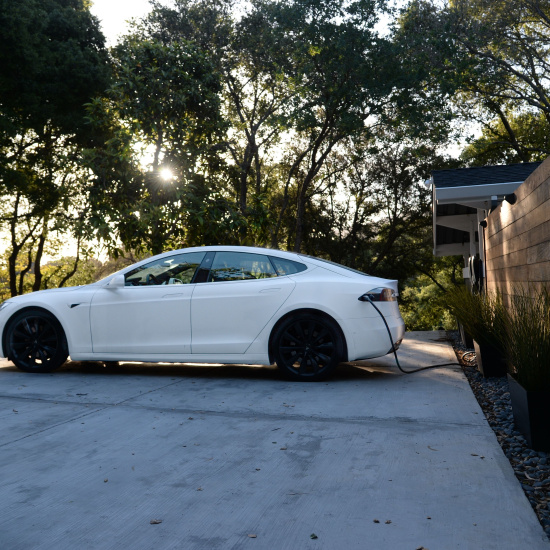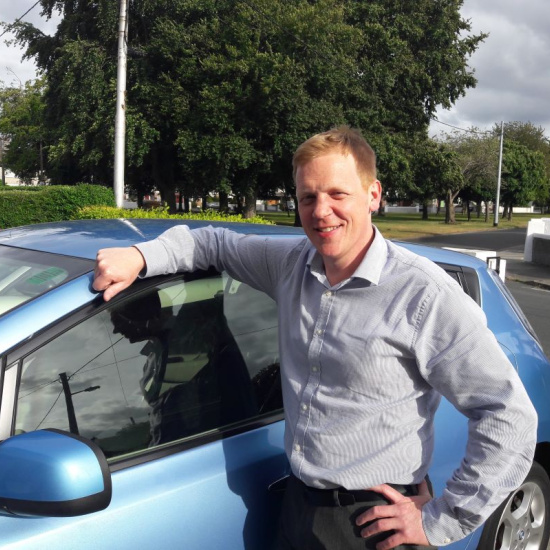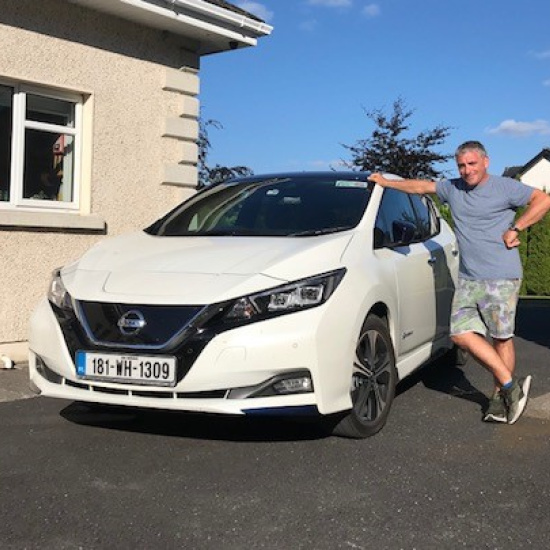Under the Bonnet
Taking a closer look at the significant differences between vehicles powered by fossil fuels and those powered by electricity.
Styling aside, most electric / hybrid and internal combustion engine (ICE) vehicles look similar from the outside. But on the inside, vehicles powered by electricity are quite different from those powered by fossil fuels.
Even though Electric Vehicles have been around since the 1800s, they were side-lined by fossil fuel vehicles for most of the last century. That is until the increasing cost of imported fuel and the effects GHG emissions have on our planet demanded a shift, and technology advanced to the point where EVs can compete in range to a tank of fuel.
Thomas Parker who is credited with building the first electric car in 1884, also realised how polluting fossil fuels were and worked to power more modes of transport from electricity, way ahead of his time. Fast forward a century, imported fuel costs and legislation are pushing the elimination of ICE vehicles from our roads, with an Irish target of almost 1 million EVs by 2030 and in practice, it won't be possible to place ICE cars or vans on the market in the EU from 2035 (Passed by EU Parliament 9th June 2022).
There are still many incentives for motorists considering the switch to electric driving, but here's some info that will help you to make an informed decision when you're considering changing your car.
We're going to take a look at the main mechanical differences between Internal Combustion Engine vehicles (ICE), Battery Electric Vehicles (BEVs) and Plug in Hybrid Electric Vehicles (PHEVs) and what these all mean for emissions, efficiency, maintenance costs, performance and the driving experience.
What makes them go...
The most significant difference between ICE, BEVs and PHEVs is found in 'the powertrain', the components that generate motive power and deliver it to the wheels to move the car.
- ICE vehicles burn fuel (usually petrol or diesel) that releases heat to move parts of the engine and other components that deliver power to the wheels. The ignition starts this combustion process.
- BEVs use power stored as electricity in rechargeable batteries and deliver it via one or more electric motors to the wheels.
- PHEVs have both ICE and electric components, along with controls that manage the balance of electric and ICE power used while driving.
Through the ignition and combustion of a 15:1 air-fuel mix, the ICE engine converts thermal energy into mechanical energy and emits waste exhaust gases in the process. Improvements in efficiency and reduction in emissions aside, ICE technology has not changed much in the last 100 years.
There are hundreds of moving parts with tight tolerances that must work together to keep the combustion engine running. When the combustion process starts you can hear and feel the vibrations in the vehicle caused by the mechanical and hydraulic systems.
ICE engines produce power in a limited speed range and use gears to maintain acceleration. Fuel keeps burning as long as the engine is switched on, even when the car is not moving.
Electrical powertrains convert electrical energy (stored in the battery), into mechanical energy which turns the motor, rotating the wheels. EVs have 90% fewer moving parts than ICE vehicles.
The primary components of an EV include a battery (even hydrogen powered electric vehicles include a battery!), on-board charger, power inverter, electric motor and a battery management system.
- EV batteries store electrical energy from an external source, they typically use DC current which must be converted to AC to drive the motor.
- The on-board charger manages power going to the battery while charging from slow chargers, it converts AC from slow chargers to DC to store in the battery. Fast or DC charging goes directly to the battery.
- The power inverter converts the battery's DC into AC, that's used to control motor speed.
- Most EVs have one electric motor which is more economical. Multiple electric motors can offer improved handling and even make a 180-degree turn on the spot possible, but not very practical!
- A battery management system, oversees the vehicle's power to the motor, regenerative braking, A/C and electronic systems.
A hybrid of both systems, Plug in Hybrid Vehicles, contain both an ICE and an electric motor and share a transmission and automatic gearbox. PHEVs can be driven in a number of modes,
-
purely electric mode for emission free driving (up to a range limited by the capacity of the battery),
-
purely fossil fuel mode (usually petrol), or
-
a combination of both, limiting emissions (compared to an ICE vehicle).
PHEV batteries generally have less capacity than BEVs - they are sized to provide driving in electric mode for most journeys, with ICEs to complete longer journeys without having to charge. Depending on your needs as a driver, you could use electric mode for most of your journeys, for example if your commute is 20km and drive a PHEV with 50km electric range, you could complete a round trip on electric mode in a single charge, and recharge overnight. 2019 CSO figures show that 70% of car journeys are less than 15 minutes in Ireland.
Fuelling up...
![04[1]-2](/sites/default/files/styles/768x600/public/plan-your-energy-journey/for-your-home/electric-vehicles/04%5B1%5D-2.jpg?h=bdfc7336&itok=E-WNXTTa)
An ICE vehicle can be refuelled with petrol or diesel at any forecourt. Simply go to the pump, open your tank and watch the 2 dials spin showing # litres and € cost of your fill.
The price of fuel reached over €2 per litre in the Summer of 2022 but has since dropped. Prices are open to fluctuation depending on supply and other issues.
This might take you 800km (€14/100km) on petrol or 1100km (€9.72/100km) on diesel depending on your vehicle, journey profile, driving conditions and driving behaviour (speed, acceleration etc).
To fuel up an EV, plug it in: Recharge at home or at one of the many public charge points. Regenerative braking (see below) also adds some capacity to batteries. Typically, the higher the capacity (kW) of the battery, the higher the range and the longer it takes to charge.
At least 80% of EV charging is done at home where drivers normally park their cars (an average European car is used for 2 hours per day leaving 22 hours for charging).
SEAI grants are available to install a home charger or use a 3 pin plug and 'granny cable' (always check that the socket and cable run are safe to use).
Charging at home is always AC (Alternating Current) charging, the costs per unit are the same as your electricity supply contract. There are significant savings to be made by making sure you're on a suitable night rate tariff.
EV timers or a smart phone app (which often come with your car) can control the time of charging to maximise the benefit of cheaper night rate electricity, smart tariffs or PV solar panels.
Most vehicles have connectors for 2 speeds of charging, AC (aka 'slow') and DC (Direct Current - 'fast'). The vehicle's on-board charger controls the speed of charging on AC chargers, as it converts the AC supply to DC for storing in the battery.
The length of time to charge is determined by the capacity of the battery in the vehicle and its power electronics (some cars come with faster AC chargers, check what speed you get when buying), the onboard charger (AC charging) and the type of charger it is plugged into. For example a 40kW Nissan Leaf (a much more expensive Porsche can charge 5 times faster at 350kW. But even across new and second had cars faster and slower less expensive electronics are available.), charges from 0 - 100% in 7.5hrs on a 7kW domestic charger to give a range of approx. 250km. At a night rate of 12c/kWh, the cost is around €5.40, or €2.16/100km. The last time I used a public charger was a fast charger for 27 minutes, added 100km to my range for a cost of €6.61.
There are many types of public chargers that charge at varying speed and cost. AC charging (up to 22kW) on public chargers is generally done through the owner's cable (stored in the car). DC or 'fast' chargers (>45kW) have cables tethered to the charging unit. The DC supply goes directly to the battery, bypassing the onboard charger.
Most PHEVs are petrol / electric, fill the ICE tank at a regular forecourt and charge the batteries by plugging into an external electricity source the same a BEV. PHEVs have smaller batteries than most BEVs, and therefore take a shorter time to charge. Some limited charging may be achieved by the ICE via an on-board generator, and also through regenerative braking.
What makes them accelerate...
Whether manual or automatic transmission, acceleration in all ICE vehicles is controlled by gearbox to control engine revs. Lower gears deliver more pulling power, while higher gears deliver more speed.
In a manual transmission, the driver regulates power and speed through moving up and down through gears using the gear stick and clutch. In an automatic transmission, there is no clutch and a control system determines when to change gears as pressure on the accelerator or brake pedals vary.
EVs don't have a gearbox, or gear stick, they have a single speed transmission, or 1 gear that takes instructions (forward or reverse) from a drive selector. This may seem like an automatic transmission gearbox but it's not really. With instantaneous power, EVs can deliver maximum torque from zero RPM.
It is impossible to stall an EV and reverse 'gear' is the EV motor working in reverse through an electrical instruction. Without a speed limiter, theoretically an EV can drive at the same top speed in reverse as forward! A Nissan Leaf broke the world record for the fastest car driven over a mile in reverse, averaging 55mph in 2012.
PHEVs have an automatic transmission and an electric motor that works in tandem in different scenarios to maximise efficiency. This can vary by vehicle, for example taking off from stationary or at low speeds the electric motor drives the vehicle, at high speeds ICE will be the main power source. When extra acceleration is needed, both the ICE and motor can work together for additional power.
What makes them slow and stop...
In an ICE vehicle, a hydraulic friction braking system engages when the driver pushes the brake pedal. Disc brakes generate the friction needed to slow or stop the vehicle. Mechanical handbrakes are generally used for parking.
Regenerative braking is found on most PHEV and BEVs, This mechanism recovers some energy that would otherwise be lost to heat. EV's can run the electric motors in reverse to brake and use it like a generator, converting recovered energy into electricity to recharge its battery and improve efficiency. 'Regen', as it is often called, makes rural roads (the up and down ones) much more efficient - you will go further - in an EV than when motorway driving.
One pedal driving is a feature on some EVs which allows the vehicle to come to a gradual stop by releasing the accelerator, without pushing the brake.
What all this means for...
Emissions
BEVs deliver emission free driving from the tailpipe, PHEVs deliver emission free driving when driving exclusively on the electric motor. ICE vehicles powered by fossil fuels will always release emissions as a by- product of the combustion process.
Life cycle emissions of a BEV on current grid mix, is around 30% of an ICE, powered by renewable energy, this figure drops to less than 20%. PHEV is somewhere in between. There is huge potential in Ireland to use smart charging to integrate more renewable energy to the national grid and limit emissions.
Maintenance costs
An ICE vehicle has hundreds of moving parts susceptible to wear and requires ongoing maintenance. This has implications for things to go wrong and high servicing costs over the life of the vehicle.
A typical ICE servicing checklist might include an oil change, spark plugs, hydraulic fluid and coolant levels, timing belt, engine tuning, exhaust and operations of brakes and steering, cooling system (from radiators in your car to pumps and hoses) and suspension checks.
The only moving part in an EV is the electric motor. There is also less brake pad wear because the motor slows the vehicle before friction braking is needed. The energy goes back to the battery, instead of wearing out your brake pads! There is no engine oil, clutch or gearbox, no exhaust and fewer moving parts that require less periodic maintenance and offer increased reliability.
BEV servicing and maintenance includes updating software for improved performance (driving & safety), tyres, brake pads, windshield wipers, lights, -these also apply to ICE vehicles.
It is estimated that BEVs are at least 30% cheaper to service and maintain than their petrol and diesel equivalents. With PHEVs, while providing the best of both worlds regarding range, the maintenance requirements of both ICE and EV components together in this vehicle type does not reap advantages of reduced maintenance costs.
Efficiency
EVs are substantially more efficient than ICE vehicles, as electric motors convert over 90% of electrical energy into mechanical energy.
The efficiency of an ICE vehicle is around 30% - that is 70% of the fuel burned (and €s spent) goes up in smoke and heat loss, while only 20% actually reaches the wheels. Irrespective of what powers your vehicle, Eco Driving techniques can teach you to get the best efficiency out of your vehicle.
Performance
Given that electric motors can provide instantaneous torque the moment the accelerator is pressed, EVs typically offer superior performance to ICE vehicles as there is no pause to ramp up through gears. Electric vehicles offer a variety of driving modes such as comfort, eco and sport to choose the performance mode to match your needs.
Safety
BEVs have been designed from the ground up. The smaller size of components and more freedom on placement, led to additional space within the body to commit to driver and passenger safety (additional crumple zone space) in comparison to ICE vehicles. The lower centre of gravity from battery placement also gives improved road handling. Not to mention the one pedal effect means you are braking / slowing more easily too.
Driver experience
Clara Ford, wife of Henry, drove a Detroit Electric 47 into the 1930s because it started instantly, not like her husband's cars that required hand cranking and were difficult to shift transmission! EVs still offer a quiet, smooth drive with instant acceleration, So quiet in fact, it's hard to know if the car is switched on or not! There is also the feel - good factor of emission free driving.
Experience the EV feeling by booking a test drive at your local dealership; or rent one for a few hours from one of the car clubs around Ireland (GoCar, YuGo, Enterprise etc.).




